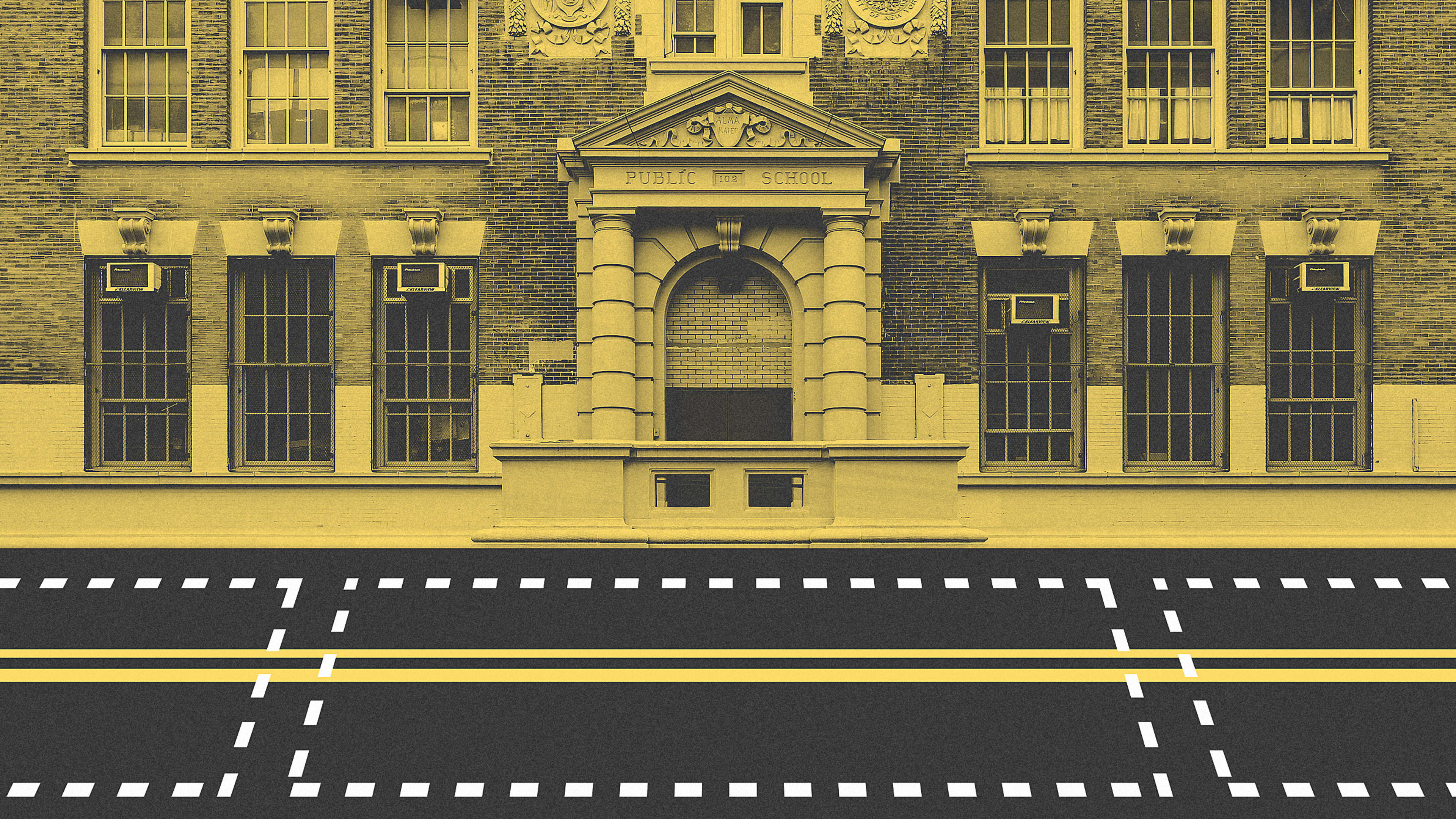Just like restaurants have expanded into streets across the country, come fall, closing off the streets in front of schools may be a key factor in reopening children’s education. this ability to increase capacity with a flexible, modular space would satisfy common-sense social distancing practices that would be impossible to enact within the current classroom configuration found at most schools. And, most important, it comes at no cost to the city.
Schools are crucial to building back the economy. Once schools reopen, parents can get back to work, which will spur economic growth in restaurants, retail, bodegas, and all those mom-and-pop enterprises that have vanished in the past several weeks.
Getting our schools open for our children triggers the reopening of our communities, and must take top priority for every city agency. But one in particular could be especially helpful: Departments of Transportation, which controls streets and sidewalks.
In New York, the DOT is already planning to selectively close 40 miles of streets to cars, opening them instead to pedestrians and restaurants, and even implementing some cooling features like spray caps on hydrants. The same thing is happening in cities around the country. These open streets are meant to absorb the demand for outdoor space in the summer months and alleviate the congestion that parks are likely to experience. If streets can become parks for the citizens who can no longer enjoy the city’s pools and playgrounds, why not also turn them into classrooms when our children are ready to return to school?
In fact, our streets already are classrooms. Anyone growing up in the city knows how to be “street smart”: It’s what happens when our children play pickup ball, tag, hide and seek, eventually navigate the subway, or buy a slice around the corner. Educators already value “experiential learning”—the opportunity for children to learn through unstructured, hands-on play and making activities. What better way than to teach by example, and respond to this crisis by repurposing one thing into another?
In practical terms, reopening schools hinges on reducing the number of children in the classroom at any given time. Just like in our workplaces, where planners are discussing staggering employees to take turns working remotely from home, educators are also looking at limiting how many children come to class at one time. The problem with that idea is that parents will have to stay home, too. But do the math: If a school can double its number of classrooms, it can cut the occupancy of those rooms by half.
It’s a little stretch of the imagination, but by setting up learning environments in an empty, secure street using moveable partitions and stackable/collapsible furniture, teachers and students can plan and design custom-made spaces that adapt to that school’s current needs. Small classrooms could be assembled in a day with tents, weather-resistant domes, and yurts. A larger frame tent could have movable partitions inside, and teachers and students could work together for the transformations and problem-solving with their own hands and minds.
In inclement weather, students might stay at home, in a variation on the traditional snow day celebration. But during most of the shoulder seasons, the fresh air and natural light are welcome assets. It could also allow for place-based learning, popular in states including Maine and Washington, where students connect to nature through hands-on experiential learning. This kind of education isn’t just for rural areas.
Treat this like a pilot project, similar to the aftermath of 9/11 when the New York DOT partnered with NYPD to temporarily close off many of the streets around the New York Stock Exchange, creating a pedestrian corridor (which, nearly 20 years later, is still successfully operating as such).
If Mayor’s Office, the Department of Education, and the School Construction Authority are willing to play in the same sandbox with the DOT, they can transform the streets with a coat of water-based paint, turn fences into chalkboards, erect heated tents, and roll out outdoor sinks and water fountains—all actions we can deploy immediately.
For one year, let’s dedicate the valuable, flat, and accessible square footage we now cede to parked and moving fossil-fuel-consuming polluters (whose absence in the past 20 weeks we have so enjoyed!) to our children.
Extreme weather would be the only reason why half the class would have to work remotely from home, but then again, who doesn’t love a snow day—even one in spring?
Jonathan Marvel is an urban designer, architect, and founding principal of Marvel Architects, a solutions-driven design practice based in New York and Puerto Rico.
Recognize your brand’s excellence by applying to this year’s Brands That Matter Awards before the final deadline, June 7.
Sign up for Brands That Matter notifications here.
